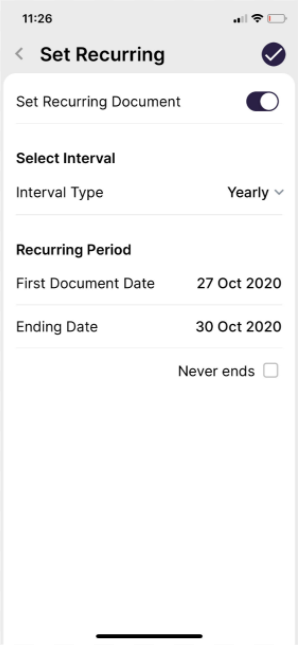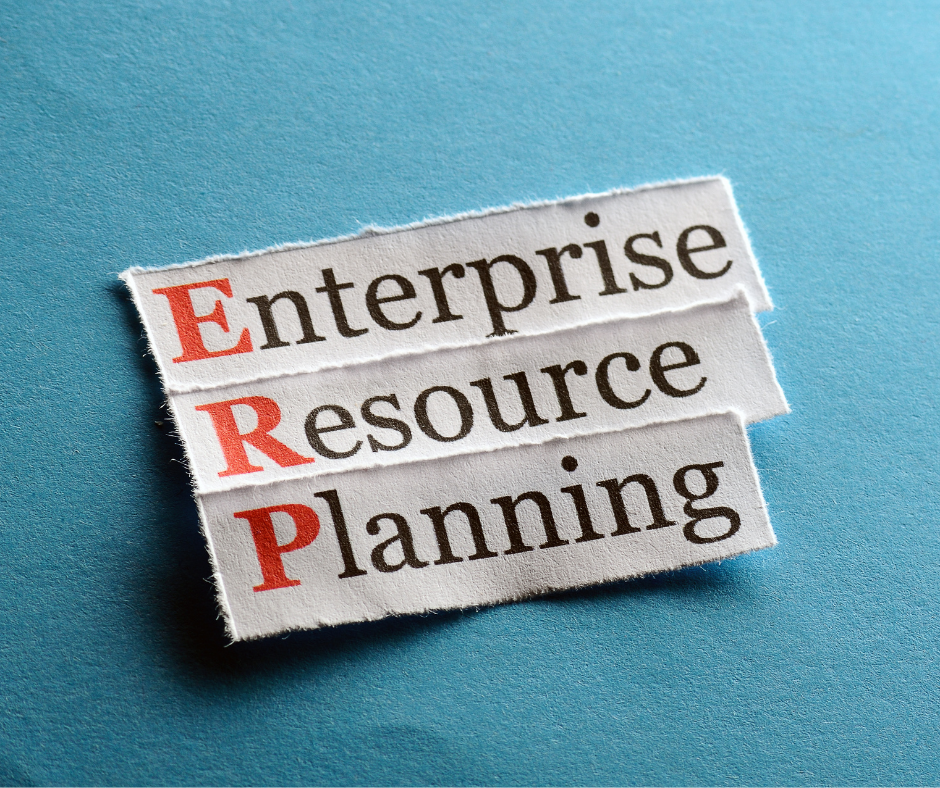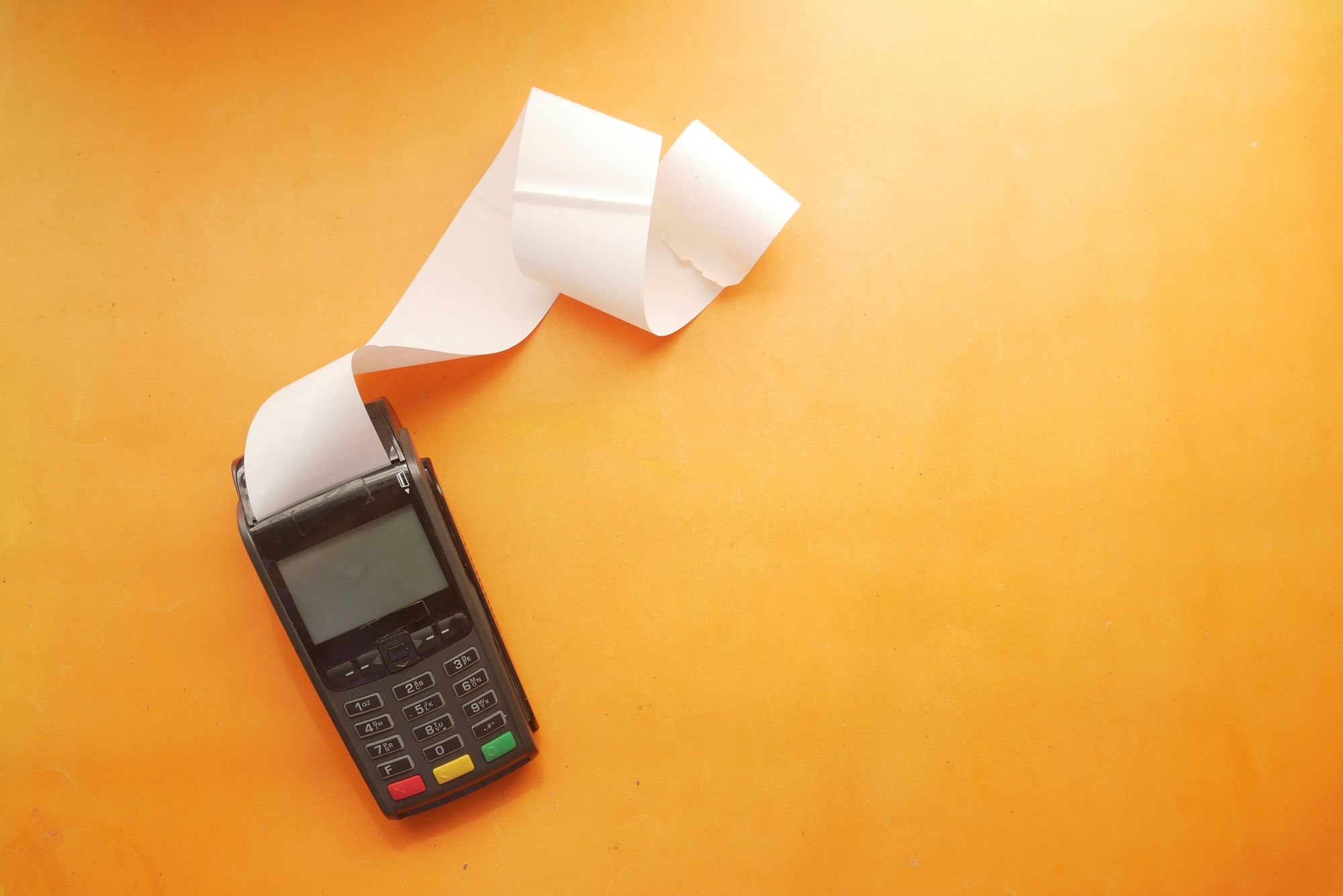In the realm of business finance, billing and invoicing are two fundamental processes that are often mentioned interchangeably but actually serve distinct purposes. Understanding the difference between billing and invoicing is crucial for the efficient management of any company's financial operations.
Most businesses (48%) are handling up to 500 invoices each month, highlighting the critical need for clarity and precision in these processes.
Billing refers to the process of requesting payment from customers, typically encompassing the entire procedure from the delivery of goods or services to the receipt of payment.
Invoicing, on the other hand, is the specific act of creating a detailed document (an invoice) that lists the products or services provided, their costs, and the payment terms. This document serves as a formal request for payment and a record of the transaction.
To streamline these financial processes, many companies turn to comprehensive solutions like Deskera ERP. Deskera ERP is an integrated enterprise resource planning software that simplifies business operations, including billing and invoicing.
It offers features such as automated invoice generation, real-time financial tracking, and seamless integration with other business functions, helping businesses maintain accuracy, improve efficiency, and ensure timely payments.
By utilizing Deskera ERP, businesses can better manage their financial workflows, reduce errors, and enhance overall productivity.
Bill Definition: Understanding the Basics and Importance in Business
In business, a bill is a document issued by a seller to a buyer that specifies the amount of money owed for goods or services provided. It typically includes details such as a list of the items or services, their prices, the total amount due, and payment terms.
The bill serves as a formal request for payment and is an essential part of the billing process, helping to ensure transparency in financial transactions and accurate record-keeping.
The purpose of a bill is to serve as legal evidence for both the buyer and the seller that a sales transaction took place.
Billing is mostly common for retail businesses, such as grocery stores, merchandise stores, restaurants, and dining establishments, where the customer pays for the money upfront.
Bills typically contain the following information:
- Bill Number: A unique identifier assigned to the bill for tracking and reference purposes.
- Date of Issue: The date when the bill is created and issued to the customer.
- Seller’s Information: Details of the seller or service provider, including name, address, contact information, and sometimes tax identification numbers.
- Buyer’s Information: Details of the customer or client receiving the bill, including name, address, and contact information.
- Description of Goods or Services: A detailed list of the products or services provided, including descriptions, quantities, and any relevant specifications.
- Unit Prices: The cost per unit of each item or service listed on the bill.
- Total Amount Due: The total payable amount, calculated by summing the costs of all listed items or services, including any applicable taxes, discounts, or additional charges.
- Payment Terms: Conditions under which the payment should be made, such as due date, accepted payment methods, and any penalties for late payment.
- Tax Information: Details of any taxes applied to the transaction, such as sales tax or value-added tax (VAT), including rates and amounts.
- Additional Notes: Any other relevant information or special instructions related to the transaction, such as delivery terms or return policies.
These elements ensure that the bill provides a comprehensive and clear record of the transaction, facilitating transparency and efficient financial management.
The importance of bills in business is multifaceted and crucial for smooth financial operations. Here are some key points highlighting their significance:
- Transparency and Clarity: Bills provide detailed information about the goods or services provided, including quantities, prices, and total amounts due. This clarity helps prevent misunderstandings and disputes between businesses and customers.
- Financial Record-Keeping: Bills serve as official records of transactions, which are essential for maintaining accurate financial statements, tracking sales, and managing expenses. Proper documentation aids in auditing and ensures compliance with tax regulations.
- Cash Flow Management: By issuing bills promptly, businesses can ensure timely payments from customers. This is critical for maintaining healthy cash flow, which is necessary for meeting operational expenses, investing in growth, and avoiding liquidity issues.
- Legal Protection: Bills act as legally binding documents that can be used as evidence in case of payment disputes. They provide a formal trail of transactions that can protect both the business and the customer.
- Customer Relationships: Clear and accurate billing helps build trust with customers. When customers receive detailed and correct bills, they are more likely to have a positive experience, which can lead to repeat business and good word-of-mouth referrals.
- Business Analysis and Planning: Analyzing billing data can provide valuable insights into sales trends, customer preferences, and business performance. This information is crucial for making informed business decisions and strategic planning.
Overall, bills are fundamental to the financial health and operational efficiency of a business, ensuring that transactions are documented, payments are received, and financial records are maintained accurately.
Invoice Definition: Understanding the Basics and Importance in Business
In business, an invoice is a formal document issued by a seller to a buyer that itemizes and records a transaction between the two parties. It includes details such as the products or services provided, their quantities, unit prices, total amount due, and payment terms.
The purpose of an invoice is to request payment, at a specified payment term, such as net-30. And since an invoice serves as a demand for payment, it’s typically issued after the delivery of the purchased product or service.
Another important distinctive feature of invoices is that they represent the presence of credit, as the seller is not receiving cash immediately, but at a future date.
The invoice serves as a request for payment from the buyer to the seller and acts as an essential record for both parties involved in the transaction. It typically contains:
- Invoice Number: A unique identifier for tracking and reference.
- Date of Issue: The date when the invoice is created.
- Seller's Information: Name, address, contact details, and sometimes tax identification number.
- Buyer's Information: Name, address, and contact details of the customer or client.
- Description of Goods or Services: Detailed list of the items sold or services rendered.
- Quantities and Prices: Number of items and their individual prices.
- Total Amount Due: The total payable amount, including any taxes, discounts, or additional charges.
- Payment Terms: Conditions under which the payment should be made, such as due date, accepted payment methods, and any penalties for late payment.
Invoices are crucial for businesses as they help in maintaining accurate financial records, ensuring timely payments, and facilitating financial planning and analysis.
Invoices play a crucial role in business operations for several reasons:
- Financial Tracking and Record-Keeping: Invoices provide a clear and detailed record of all sales transactions, which is essential for maintaining accurate financial records. This helps businesses track their income, manage expenses, and prepare financial statements.
- Payment Requests: An invoice serves as a formal request for payment from the buyer to the seller. It outlines the amount owed, payment terms, and due dates, ensuring that businesses can effectively manage their accounts receivable and maintain healthy cash flow.
- Legal Documentation: Invoices act as legally binding documents that can be used as evidence in case of disputes over payment or the specifics of the transaction. They provide a formal trail that can protect both the seller and the buyer.
- Tax Compliance: Invoices are critical for tax reporting and compliance. They provide necessary documentation for calculating and reporting sales tax, value-added tax (VAT), and income tax. Accurate invoicing helps businesses comply with tax regulations and avoid penalties.
- Business Analysis and Planning: Invoices offer valuable data for analyzing business performance. By reviewing invoices, businesses can identify sales trends, customer purchasing patterns, and profitability of products or services. This information is crucial for strategic planning and decision-making.
- Customer Relations: Clear and accurate invoicing contributes to positive customer relationships. It ensures transparency and professionalism, which can enhance customer trust and satisfaction. Prompt and correct invoicing can also reduce the likelihood of disputes and foster repeat business.
- Operational Efficiency: Automated invoicing systems can streamline the invoicing process, reduce errors, and save time. This allows businesses to focus on other important activities and improve overall operational efficiency.
Overall, invoices are essential tools for financial management, legal protection, tax compliance, business analysis, and maintaining positive customer relationships.
If you want to learn how to fill out an invoice from scratch, head over to our guide on how to make an invoice.
Bill vs Invoice: Main Differences
The main differences between billing and invoicing are:
Definition and Purpose:
- Bill: A bill serves to inform the buyer of the amount owed for goods or services and requests payment.
- Invoice: An invoice provides a detailed breakdown of goods/services provided, quantities, prices, and terms, serving as a formal request for payment and comprehensive transaction record.
Timing:
- Bill: Typically issued before payment to notify the buyer of the pending amount.
- Invoice: Can be issued before to secure payment, or after delivery to detail the transaction for record-keeping and payment request.
Content:
- Bill: Includes basic payment information like total amount due, due date, and acceptable payment methods.
- Invoice: Contains detailed specifics such as itemized goods/services, quantities, unit prices, total amount due, payment terms, applicable taxes, and any discounts.
Legal and Financial Record:
- Bill: Primarily acts as a payment request, providing a basic transaction record.
- Invoice: Offers a comprehensive transaction record crucial for legal documentation, financial record-keeping, tax compliance, and managing accounts receivable.
Usage:
- Bill: Typically used for simpler transactions and initial payment notifications.
- Invoice: Essential for complex financial tracking, maintaining cash flow, ensuring tax compliance, and fostering customer trust through transparent billing practices.
Components:
- Bill: Consists of essential payment details.
- Invoice: Includes a detailed breakdown to facilitate payment and thorough transaction understanding.
Examples:
- Bill: Utility bills (e.g., electricity, water), subscription fees (e.g., magazines, memberships).
- Invoice: Sales invoices (e.g., goods sold), service invoices (e.g., consulting services, repairs).
One-time/Multi-time Use:
- Bill: Often used for one-time transactions where payment is due once.
- Invoice: Used repeatedly for ongoing services or periodic transactions, issued regularly or upon service completion.
Understanding these distinctions helps businesses effectively manage their financial transactions, maintain accurate records, and ensure timely payments while complying with financial regulations.
Bill vs Invoice: Comparison Chart
For easy access, here’s a comparison chart that summarizes all of the main differences between billing vs. invoicing:
Invoices vs. Bills vs. Receipts
Definition and Purpose:
- Invoice: Provides a detailed breakdown of goods/services provided, their quantities, prices, and terms. It requests payment and serves as a comprehensive transaction record.
- Bill: Notifies the buyer of the amount owed for goods or services and requests payment, typically issued before payment.
- Receipt: Confirms that payment has been made for goods or services, serving as proof of purchase.
Timing:
- Invoice: Can be issued before to secure payment or after delivery to detail the transaction.
- Bill: Issued before payment is made to notify the buyer of the pending amount.
- Receipt: Issued after payment as confirmation of the completed transaction.
Content:
- Invoice: Includes itemized details of goods/services, quantities, prices, total amount due, payment terms, taxes, and any discounts.
- Bill: Contains basic payment information such as total amount due, due date, and acceptable payment methods.
- Receipt: Confirms payment details: date, amount paid, payment method, and items purchased.
Legal and Financial Record:
- Invoice: Crucial for legal documentation, financial record-keeping, tax reporting, and managing accounts receivable.
- Bill: Serves as a formal payment request and provides a basic transaction record.
- Receipt: Acts as proof of purchase, often required for returns, warranties, or expense reimbursements.
Usage:
- Invoice: Essential for managing cash flow, ensuring tax compliance, and maintaining customer relations through transparent billing.
- Bill: Used for notifying amounts due and initiating payment for goods or services.
- Receipt: Used to confirm transaction completion and for customer records or financial reconciliation.
Components:
- Invoice: Detailed breakdown aids in payment processing and transaction understanding.
- Bill: Contains essential payment information necessary for payment initiation.
- Receipt: Essential payment details provide confirmation of payment for both the buyer and seller.
Examples:
- Invoice: Sales invoices (e.g., goods sold), service invoices (e.g., consulting services, repairs).
- Bill: Utility bills (e.g., electricity, water), subscription fees (e.g., magazines, memberships).
- Receipt: Point-of-sale (POS) receipts, online purchase confirmations.
One-time/Multi-time Use:
- Invoice: Often used repeatedly for ongoing services or periodic transactions.
- Bill: Typically used for one-time transactions where payment is due once.
- Receipt: Typically used for single transactions, confirming payment once.
Understanding these distinctions helps businesses effectively manage their financial transactions, maintain accurate records, and ensure compliance with financial regulations and customer expectations.
Invoice Bill Format
Here's a basic outline of the formats for an invoice and a bill:
Invoice Format
Header Section:
- Invoice Title: "Invoice"
- Seller Information: Name, Address, Contact Information
- Buyer Information: Name, Address, Contact Information
- Invoice Number: Unique identifier for the invoice
- Invoice Date: Date the invoice is issued
- Due Date: Date by which payment is due
Body Section:
- Itemized List: Description of goods/services provided
- Item Description: Details of each item/service
- Quantity: Number of units provided
- Unit Price: Price per unit
- Total Price: Quantity multiplied by unit price for each item/service
- Subtotal: Total amount before taxes or discounts
- Taxes: Any applicable taxes (e.g., sales tax, VAT)
- Discounts: Any discounts applied
Footer Section:
- Total Amount Due: Sum of subtotal, taxes, and discounts
- Payment Terms: Terms of payment (e.g., methods accepted, due date)
- Additional Notes: Any additional information relevant to the invoice
- Thank You Message: Polite request for prompt payment
Bill Format
Header Section:
- Bill Title: "Bill" or "Statement"
- Seller Information: Name, Address, Contact Information
- Buyer Information: Name, Address, Contact Information
- Bill Number: Unique identifier for the bill
- Bill Date: Date the bill is issued
Body Section:
- Summary of Charges: Total amount due
- Breakdown of Charges: Description of goods/services provided
- Description: Brief overview of items/services
- Amount Due: Total amount for each item/service provided
Footer Section:
- Total Amount Due: Sum of all charges
- Due Date: Date by which payment is due
- Payment Instructions: Methods accepted and instructions for payment
- Additional Information: Any additional terms or information relevant to the bill
Formatting Tips
- Use clear, easy-to-read fonts and sizes.
- Include company logos or branding for professional appearance.
- Ensure all necessary details (dates, amounts, descriptions) are clearly visible.
- Provide contact information for both parties in case of queries.
Both invoice and bill formats serve different purposes but aim to provide clarity and facilitate prompt payment from the buyer. Adjustments can be made based on specific business needs and regulatory requirements.
Automate Bills and Invoices with Deskera
While there are traditional methods of generating bills and invoices, cloud accounting platforms such as Deskera provide quick and easy-to-use bill and invoice creation tools.
Regardless of whether you need bills or invoices: the software significantly simplifies your work by automating the entire process of generating and sending your financial documents.
Let’s go over some of the main tools Deskera offers for both invoice and bill generation.
Bill Generation Tools
Organize and manage your bills with ease from Deskera’s online billing management software.
Get a complete overview of your business expenses with Deskera’s intuitive “Bill” tab. Know which bills are due for payment to avoid late payment fees and a poor relationship with your suppliers.
Have recurring utility bills or repeat inventory purchases?
With Deskera, you can automate these accounts payables by using our in-built recurring bill feature. Just set up your desired interval, starting and ending date, and you’re done!

Making bill payments is just as easy!
Integrate with your business bank account, and pay directly from the Deskera login, in a few clicks.
The best part?
All these accounting tools are accessible to you anytime, anywhere by simply downloading the Deskera mobile app.
Invoice Generation Tools
Want to receive your invoice payments twice as fast?
Use Deskera’s invoice management software, to keep track of your invoices all in one place and establish an efficient cash flow system.
Deskera has an invoice generator that offers over 100+ templates you can personalize to your business brand with your preferred colors, font, business logo, signature, and so much more.
All you have to do is head over to the document generator, pick your favorite template, fill out the invoice details, and you’re done. As easy as 1-2-3!
Export the document by pressing Share at the top of the page, to download, print, or email the invoice to your client.
You can download and send the invoice in any format your desire: PDF, XLS, or DOC.
That's not the end of it, though.
With Deskera you can streamline almost every other part of your invoicing process, with features such as recurring payments, reminders for outstanding invoices, automatic tax compliance, and more.
So, what are you waiting for?
Give Deskera a try out now, by signing up for our free trial! No credit card details required.
Bill vs Invoice FAQ
#1. Does an Invoice Mean You’ve Paid?
No, an invoice doesn’t mean the buyer has paid. An invoice serves as a request for payment, usually after a good or service has been completed.
You issue an invoice when you want to get paid and you receive one when you have to pay for a good or service bought on credit.
#2. What Type of Account Is Bills Payable?
Bills payable show the amount a business owes for goods and services bought on credit. The account is recorded as a current liability, under the company’s balance sheet statements.
For more information on the different types of accounts in small businesses, head over to our guide on the chart of accounts.
Bill vs Invoice: Key Takeaways
Understanding the difference between billing and invoicing is essential for businesses to effectively manage their financial operations and maintain clear communication with customers. While both terms involve requesting payment for goods or services, they serve distinct purposes and carry different levels of detail:
- Billing primarily involves issuing a straightforward request for payment, typically before goods or services are provided. It focuses on notifying the buyer of the amount owed, often through simple documents like utility bills or subscription notices.
- Invoicing, in contrast, is a detailed document that itemizes the goods or services delivered, quantities, prices, payment terms, and any applicable taxes or discounts. It serves as a formal request for payment and provides a comprehensive record of the transaction. Invoicing is crucial for businesses engaged in complex transactions or recurring services, enabling accurate financial tracking, tax compliance, and effective management of accounts receivable.
Mastering the nuances between billing and invoicing empowers businesses to:
- Maintain Financial Clarity: By accurately documenting transactions and ensuring prompt payment.
- Enhance Customer Relationships: Through transparent and professional billing practices.
- Optimize Operational Efficiency: With streamlined financial processes and automation.
In conclusion, businesses that differentiate between billing and invoicing can better manage cash flow, comply with regulatory requirements, and foster trust and satisfaction among their clientele.
By leveraging Deskera ERP, businesses can streamline their financial operations, reduce errors, and enhance efficiency. The platform's robust features include automated invoicing workflows, real-time financial insights, and seamless integration with accounting and CRM modules.
This not only improves accuracy and timeliness in billing cycles but also enhances overall financial management and customer satisfaction. It also comes with in-built templates for invoices and bills, which can be customized as per your business needs.
If you want to read more about accounting concepts, check out the Deskera blog for a better grasp of critical concepts that can come in handy when running your own small business.
Related Articles














